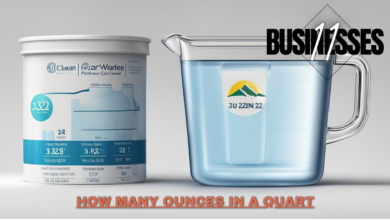Aborloo and Fossa Alterna A Joint Publication by IRC

The Aborloo and Fossa Alterna is an important joint publication by IRC that addresses critical issues in sanitation and hygiene.
This publication brings together valuable insights and research findings that aim to improve sanitation practices in various communities.
This article will explore the key aspects of this publication, its significance, and the innovative ideas it presents for enhancing sanitation systems worldwide Aborloo and Fossa Alterna a joint publication by IRC.
What is the Aborloo and fossa alterna a joint publication by IRC?
The Aborloo and Fossa Alterna is a collaborative effort by IRC, focusing on sustainable sanitation solutions. The Aborloo is a type of ecological toilet that uses a composting system to break down waste.
Fossa Alterna is a pit toilet system that offers a way to manage human waste effectively. Together, these systems promote hygiene and reduce environmental impact.
This publication shares practical information about both systems, providing guidelines and best practices for communities interested in improving their sanitation options.
By implementing these systems, communities can promote better health and environmental sustainability.
Why is Sanitation Important?
Sanitation plays a crucial role in maintaining public health. Poor sanitation can lead to the spread of diseases such as cholera, dysentery, and typhoid.
By providing access to safe and clean toilets, communities can significantly reduce the risk of disease transmission. This publication highlights the importance of sanitation in preventing health issues and encourages communities to adopt better practices.
Improved sanitation not only protects individual health but also enhances the overall well-being of communities. Access to clean water and proper waste disposal methods are essential components of a healthy society.
How Does the Aborloo Work?
Overview of the Aborloo System
The Aborloo is an innovative sanitation solution designed to manage human waste in an environmentally friendly way. Unlike traditional toilets that rely on water for flushing, the Aborloo uses a composting process to break down waste.
This system is particularly useful in areas where water is scarce or where conventional sewage systems are unavailable. By using the Aborloo, communities can promote better hygiene while conserving water and minimizing environmental impact.
Components of the Aborloo
The Aborloo consists of several key components that work together to ensure its functionality:
Composting Chamber: This is where the waste is collected.
It is designed to provide the right conditions for composting, allowing bacteria and other microorganisms to break down the waste effectively.
Ventilation System: Proper airflow is essential for the composting process. The Aborloo features a ventilation system that helps control odor and maintain moisture levels within the composting chamber.
Collection Bin: As waste decomposes, it produces compost, which is collected in a separate bin. This compost can be used as a nutrient-rich fertilizer for gardening and agriculture, providing a sustainable way to recycle waste.
Access Door: The Aborloo is equipped with a door that allows users to easily access the composting chamber for maintenance and emptying when necessary.
The Composting Process
The composting process is at the heart of how the Aborloo works. Here’s a step-by-step breakdown: Waste Collection: When a user utilizes the Aborloo, waste is deposited into the composting chamber.
Microbial Activity: Once inside, bacteria and other microorganisms begin to break down the waste. This process generates heat, which helps to kill pathogens and accelerates decomposition.
Aeration: The ventilation system allows air to cIRCulate within the chamber. This aeration is crucial for maintaining the right conditions for composting and preventing the build-up of unpleasant odors.
Moisture Management: It is important to maintain appropriate moisture levels for effective composting. Users can add carbon-rich materials like dry leaves or sawdust to help balance moisture and carbon levels.
Composting Completion: Over time, the waste is transformed into compost. This can take several months, depending on environmental conditions and the amount of waste collected.
Benefits of Using the Aborloo
The Aborloo offers several benefits that make it an attractive option for communities:
Water Conservation: By eliminating the need for flushing with water, the Aborloo saves valuable water resources, making it suitable for arid regions.
Environmental Sustainability: The composting process reduces waste disposal issues and produces nutrient-rich compost, which can enhance soil health and support local agriculture.
Cost-Effective: Building and maintaining the Aborloo requires lower investment compared to traditional toilets, making it accessible for low-income communities.
Health Improvements: The Aborloo helps prevent the spread of waterborne diseases by managing waste effectively, contributing to better overall community health.
Maintenance and Care
Regular maintenance is essential to ensure the Aborloo functions properly. Users are encouraged to: Add Carbon Materials: To maintain the right balance in the composting chamber, users should regularly add carbon-rich materials like dried leaves or straw.
Monitor Moisture Levels: Keeping an eye on moisture levels is important for effective composting. Users can adjust moisture by adding or reducing carbon materials.
Empty the Compost Bin: When the compost is ready, it should be removed and used as fertilizer. This process should be done periodically to keep the system functional and hygienic.
What is Fossa Alterna?
The Fossa Alterna is another innovative toilet system included in the joint publication. This system uses alternating pits to manage human waste. When one pit is full, users switch to the other, allowing the first pit to decompose naturally.
This process prevents waste from contaminating the environment and produces valuable compost for gardening.
The Fossa Alterna is an effective solution for areas with limited access to water and sanitation facilities. The publication provides detailed instructions on how to construct and maintain a Fossa Alterna, ensuring communities can implement this sustainable solution.
What Are the Benefits of These Systems?
The Aborloo and Fossa alterna a joint publication by IRC systems offer numerous benefits for communities. Some key advantages include Water Conservation: Both systems use minimal water, making them ideal for areas facing water scarcity.
Environmental Sustainability: They reduce waste pollution and promote composting, benefiting local ecosystems.
Cost-Effective: Building these systems requires lower investment compared to traditional flush toilets, making them accessible for many communities.
Health Improvements: By providing clean sanitation options, these systems can significantly reduce the risk of waterborne diseases.
The joint publication emphasizes these benefits, encouraging communities to adopt these systems for better health and environmental outcomes.
| Benefits | Description |
| Water Conservation | Minimal water usage reduces demand on local water sources. |
| Environmental Sustainability | Promotes composting and reduces waste pollution. |
| Cost-Effective | Lower construction and maintenance costs compared to flush toilets. |
| Health Improvements | Reduces the spread of waterborne diseases and improves hygiene. |
How Can Communities Implement These Systems?
Implementing the Aborloo and Fossa alterna a joint publication by IRC systems requires careful planning and community involvement. Communities can start by organizing workshops to educate members about these systems.
The publication provides a step-by-step guide on how to build both the Aborloo and Fossa alterna a joint publication by IRC. It is important to involve local leaders and stakeholders in the process to ensure support and collaboration.
By working together, communities can share resources and knowledge, making the implementation more effective. Encouraging community participation will also help ensure the systems are used and maintained properly.
What Challenges Might Communities Face?
While the Aborloo and Fossa alterna a joint publication by IRC offer great solutions, there can be challenges in implementing these systems. One challenge is changing people’s attitudes towards using composting toilets.
Some may feel uncomfortable using a system that does not flush waste away. Education and awareness campaigns can help overcome this barrier by explaining the benefits and proper use of these systems. Another challenge is securing the necessary materials for construction. Communities may need assistance in sourcing local materials or funding for building these systems. The publication provides resources and suggestions for addressing these challenges.
What Future Developments Are Anticipated?
The Aborloo and Fossa alterna a joint publication by IRC set the stage for future advancements in sanitation technology. As more communities adopt these systems, research can continue to improve their design and effectiveness.
Innovations such as enhanced composting techniques or mobile sanitation solutions could emerge from this work. The joint publication aims to inspire further research and collaboration in the field of sanitation.
With ongoing support, it is possible to develop even better solutions that can meet the diverse needs of communities around the world.
FAQs
What are the Aborloo and fossa alterna a joint publication by IRC?
Aborloo and fossa alterna a joint publication by IRC are two innovative sanitation systems designed to improve hygiene and manage human waste effectively.
The Aborloo is an ecological composting toilet, while the Fossa Alterna uses alternating pits to handle waste.
How do these systems benefit the environment?
Both systems promote sustainable waste management by reducing water usage and preventing pollution. They convert human waste into compost, which can enrich soil and support local ecosystems.
Why is sanitation important for communities?
Access to proper sanitation is crucial for public health. It helps prevent the spread of diseases like cholera and dysentery, ensuring healthier living conditions for everyone in the community.
Can anyone build an Aborloo or Fossa Alterna?
Yes! The publication provides detailed guidelines for constructing both systems. Communities can collaborate and share resources to build these toilets effectively.
What challenges might communities face in implementing these systems?
Communities may encounter challenges such as changing people’s perceptions of composting toilets, securing construction materials, and finding funding. Education and awareness initiatives can help overcome these barriers.
How can communities support each other in implementing these systems?
Communities can organize workshops, share knowledge, and collaborate on building projects. Local leaders can also play a vital role in encouraging participation and support.
Are there any maintenance requirements for the Aborloo and fossa alterna a joint publication by IRC?
Yes, both systems require regular maintenance to function effectively. The publication includes guidance on how to maintain these toilets, ensuring they remain clean and efficient.
What are the health benefits of using these systems?
By providing clean and safe sanitation options, the Aborloo and fossa alterna a joint publication by IRC significantly reduce the risk of waterborne diseases, improving overall public health in communities.
How can I learn more about these systems?
You can access the Aborloo and fossa alterna a joint publication by IRC website or contact local organizations working in sanitation for more information and resources.
Is this publication available in multiple languages?
The IRC often translates their publications into various languages to ensure broader accessibility. Check their website for availability in your preferred language.
Conclusion
In summary, the Aborloo and Fossa alterna a joint publication by IRC provide vital information on sustainable sanitation solutions. By focusing on practical and environmentally friendly systems, it encourages communities to adopt better practices for managing human waste.
The benefits of these systems are clear, ranging from improved health outcomes to environmental sustainability.
As communities implement these systems, they can expect positive changes in public health and overall quality of life. The collaborative effort of IRC in creating this publication highlights the importance of teamwork and innovation in addressing global sanitation challenges.





